25 Most Influential Books in Law/Legal Studies 2010–2020

Law, in the academic sense of the term, is the study of all aspects of the legal institutions of human society, from the moral and philosophical foundations of the state and its legal and judicial institutions to the detailed workings of the legal system under its various aspects, from the constitution to the legislative, executive, and judicial branches of government. All of this is understood within the context of the English common law tradition, as well as its historical antecedents in Roman law. In addition, law includes the detailed study of the many specific rules, regulations, and penalties of the civil and criminal codes.
Key Takeaways
- Those who practice law typically have an insatiable need to read a lot because this profession demands constant reading: from basic law education to legal practice.
- While law books are essential considerations for any law student, it’s particularly important to keep up with the constant advances in technology as well.
- Law school requires you to have great reading and comprehension skills, and this starts with having the right books for the legal profession.
Legal studies covers much of the foregoing but tends to be more focused on the various ways in which legal institutions interact with other social institutions and with different classes of individual citizens subject to their jurisdiction. In essence, legal studies is less philosophical and less focused on the practice of the law, and more sociological and political in content.
Nevertheless, there is considerable overlap between the two fields, which is why we have compiled a list of the most influential books in both Law and Legal Studies of the past decade (2010–2020). We have assigned an objective measure of “influence” to each book within its subfield on the basis of the number of references it has received in both the academic literature and the popular media.
Note that our list does not necessarily represent the most popular books overall published during the past ten years, nor is it a list of Law/Legal Studies bestsellers during that time frame—for several reasons.
For one thing, we have excluded Law/Legal Studies textbooks and reference works, as well as sacred texts and all but the very most influential of fictional works, which may contain Law/Legal studies-related material.
For another thing, our list includes several perennial classics that remain influential today. Not only do several such works retain great contemporary influence, in some cases they have even enjoyed a resurgence in popularity in recent years.
Nevertheless, ours is not a list of the most influential Law/Legal Studies books of all time. That list would have a very different look and feel to it. Rather, our list provides you with the 25 books on Law/Legal Studies that have had the greatest combined academic and popular impact over the past decade.
Keeping Up with Evolving Law/Legal Concepts and Practices
The decision to enroll in law school can be both nerve-wracking and exciting. In law school, the importance of reading is incontestable, which is why there are so many influential books in law and legal studies.
But as prospective law students, remember that the majority of your reading assignments are mostly made up of books related to law, casebooks, and court cases with very limited explanatory text.
Law school is hard, and without the right reading comprehension skills, it becomes even harder. The right reading and comprehension skills are important for law school. Although reading thirty pages every day sounds easy at first, you might be surprised that there is so much more to accomplish beyond those 30 pages of reading.
Improving Your Law School Reading and Comprehension Skills
With so many things surrounding law school, how can you get ahead of the game? Law school experience in a law firm certainly does the trick. But keeping abreast through reading gives you that unique advantage.
Here’s how you can maximize reading legal books and similar publications:
Practice Active Reading: Be determined to thoroughly understand and critically evaluate what you are reading. Active reading will help you recognize and understand your needs. As you move forward with your reading, it becomes easier for you to look for exactly what you need.
If you want to polish your reading skills, you have to read a lot. If passive reading and re-reading worked well with you during your undergraduate years, this is not effective for law school. Active reading is the best.
One helpful tip is to read quickly. Simply go through the text, making sure you understand every word you’re reading. This helps you to become actively engaged with the text and not veer your attention away from it.
Take Notes. It’s easier to dissect the text you’re reading if you take useful notes. This makes the text easier to understand just by glancing at individual notes instead of reading the text as a whole.
Taking notes is already a skill in itself, and sadly, too many people fail to realize that. Instead, they tend to write down unnecessary notes which result in a lot of clutter. Ideally, take notes only on pivotal details like facts, locations, and other necessary information. When reviewing what you have read, incorporate and read the notes as a whole with it. That way, you will have a holistic understanding of what you are reading.
Make a reading strategy. Instead of making a forced approach, targeted reading can help you save time and energy. Strategize your reading. Ask yourself: why am I reading this? What keywords can I use so I can easily find the exact thing I am looking for?
Avoid reading something just for the sake of familiarity with the text because you can easily miss out on the important details of what you’re reading.
Have the right atmosphere. The right atmosphere can give you a more focused state, improving your reading. When reading, even the slightest distraction can interrupt your focus. Once your focus breaks, you can easily forget what you’ve been reading earlier. Thus, practice removing distractions from your environment and making yourself comfortable.
What Every Law Aspirant Should Read
Textbooks: These are designed based on the syllabus prescribed by the law school. Thesis, reports, encyclopedias, and other reference books are the primary source of information for law students.
Journals, Magazines, Periodicals, Serials, Newspapers: These help students to be updated on the most recent information on various domains.
Agreements: These are contracts based on the results of a process of an offer by one party, and accepted by the other.
If you’re interested in dedicating your college education to these and other essential legal texts, check out The Best Colleges & Universities for a Bachelor’s in Law.
Otherwise, read on for a look at the 25 Most Influential Books in Law and Legal Studies.
25 Most Influential Books in Law/Legal Studies
1.Commentaries on the Laws of England
By: William Blackstone, 1765–1770
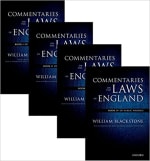

Blackstone is undoubtedly the most influential jurist in the Anglo-Saxon common law tradition. His Commentaries on the Laws of England, published in four volumes, have been mandatory reading for aspiring law students in the UK, the US, and the other English-speaking countries from his time to ours. For example, the self-taught Abraham Lincoln said of his experience reading them: “Never in my whole life was my mind so thoroughly absorbed. I read until I devoured them.” Blackstone’s Commentaries have appeared in a great many editions over the years.
2.Fatwa on Terrorism and Suicide Bombings
By: Muhammad Tahir-ul-Qadri, 2010


Authored by a prominent Pakistani-born, Canadian Islamic scholar holding the title of “Shaykh al-Islām,” this massive legal opinion originally appeared in Urdu in 2010 and almost immediately in the UK in an English translation. It was first published in the US the following year. Based on a detailed analysis of the relevant texts from the Quran and the Sunnah, this fatwa unequivocally rejects terrorism and suicide bombing as legitimate forms of political struggle. The author states that “Terrorism is terrorism, violence is violence and it has no place in Islamic teaching and no justification can be provided for it, or any kind of excuses or ifs or buts.”
3.The Federalist: A Collection of Essays Written in Favour of the New Constitution, as Agreed upon by the Federal Convention, September 17, 1787
By: Alexander Hamilton, James Madison, and John Jay, 1788
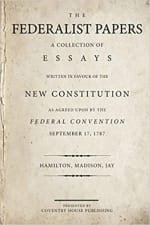

One of the most famous and politically influential texts in American history, this collection of 85 essays is nowadays most often referred to as, simply, The Federalist Papers. The individual essays were first published in several different magazines, beginning in 1787. They were then gathered together and published in book form the following year. Originally published under the collective pseudonym, “Publius,” in fact, the essays were composed individually by Alexander Hamilton (51), James Madison (29), and John Jay (5). Together, they made a persuasive case for the ratification of the new Constitution by the legislatures of the thirteen colonies, creating a new central government for the United States with a federal structure (hence the name of the collection), a balance of power among legislative, executive, and judicial branches of the federal government, and a much more powerful chief executive in the office of the President. Numerous editions of the Federalist Papers have been published over the years, including a facsimile version of the first edition published in 2015.
4.To Kill a Mockingbird
By: Harper Lee, 1960
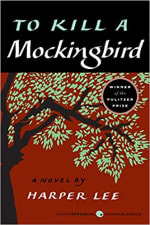

To Kill a Mockingbird is Alabama-born Harper Lee’s Pulitzer Prize-winning novel of racial injustice in the Jim Crow South. The book—and the 1962 film by Robert Mulligan based on the book—have had an incalculable impact on American life and society, playing a role within the 1960s Civil Rights Movement not unlike that which Harriet Beecher Stowe’s 1852 Uncle Tom’s Cabin played in the run-up to the Civil War. The hero of the book, Atticus Finch (played in the film by Gregory Peck), is a white country lawyer defending an innocent black man charged with rape. His unflinching dedication to the truth and to justice sets a shining example for his daughter, Scout, the novel’s narrator. The book has been republished in numerous editions.
5.Natural Law and Natural Rights
By: John Finnis, 1980
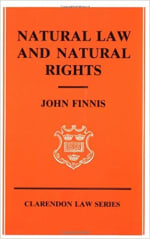

This book by a distinguished, Australian-born legal scholar was seminal in the revival of the natural law approach to ethics and jurisprudence over the past several decades. The natural law tradition, which holds that both morality and legality are ultimately based on human nature, dates back to the ancient Stoic and medieval Scholastic moral traditions and was the dominant form of moral philosophy from the time of the Reformation up until the Enlightenment, as well. As such, it forms the moral framework of the American founding and its major documents: the Declaration of Independence and the Constitution. After falling into abeyance for some two centuries, natural law jurisprudence was revived at the end of the twentieth century, in no small part thanks to this book and its author. A Second Edition was published in 2011.
6.A Theory of Justice
By: John Rawls, 1971
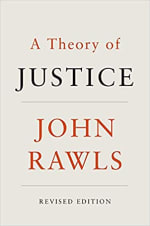

Rawls’s Theory of Justice is without a doubt the most influential work of political philosophy in the analytic tradition to have been published since World War II. The book’s argument is long and complex, but its widely-known central thesis is easily stated: A just theory of society requires that no proponent of the theory knows his own position within the society that would result from application of the theory. In a phrase, when contemplating the justice of any political theory, everyone ought to stand behind a “veil of ignorance” regarding his own position in the resulting society. In this way, a maximally egalitarian—and therefore, just—society is supposed to be guaranteed. A Theory of Justice was published in a Revised Edition in 1999.
7.Bleak House
By: Charles Dickens, 1853
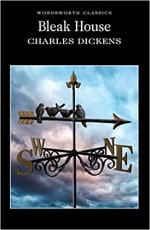

Long considered as one of Dickens’s masterpieces, Bleak House is centered on the interminable lawsuit of Jarndyce v. Jarndyce. Among the innumerable narrative threads characteristic of any Dickens novel, the central theme running through the heart of this book is the tragi-comic portrait of the Court of Chancery, which was responsible for disputes concerning wills, land, trusts, estates, and guardianships, among other things. The book is a scathing critique of the glacial slowness and unfairness of the Chancery court system of Dickens’s day, and contains several of his most memorable characters, including the hapless law clerk, Mr. Guppy, the inveterate sponger, Skimpole, the private detective, Inspector Bucket, and the immortal Mrs. Jellyby, who is consumed by aiding children in Africa while her own rowdy and filthy brood starve.
8.Restoring the Lost Constitution: The Presumption of Liberty
By: Randy E. Barnett, 2004
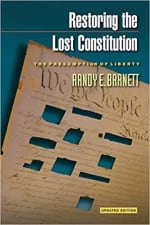

Barnett, who received his J.D. degree from Harvard, is the Patrick Hotung Professor of Constitutional Law at Georgetown University’s Law School. In this follow-up to his 1998 book (see #9 below), he details the many ways in which the US Constitution has been gutted over the course of American history, especially since the 1930s. In addition, the author defends “originalism” in interpreting the Constitution and suggests ways in which those original Constitutional provisions that are in abeyance can be restored and made operative in today’s American society.
9.The Structure of Liberty: Justice and the Rule of Law
By: Randy E. Barnett, 1998
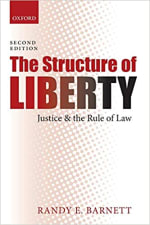

This study by noted legal scholar Barnett (see #8 above) is primarily a philosophical reflection on the nature of liberty, justice, and the rule of law. The author argues, in accordance with the Declaration of Independence, in support of the natural law and natural right conception of these virtues and institutions. Notably, he distinguishes between “liberty” and “license” by invoking the classical-liberal idea of ordered liberty as the freedom to act with virtuous self-restraint for the good. He also reflects on the type of constitutional framework that would best ensure ordered liberty in a society. A Second Edition of the book was published in 2014.
10.De Clementia [On Mercy]
By: Seneca the Younger, c. 56 AD


This essay—well-known to generations of students and scholars from the Renaissance until the nineteenth century—was written by the Roman Stoic philosopher and tragedian, Lucius Annaeus Seneca, known as “Seneca the Younger” (c. 4 BC–65 AD). Seneca was tutor and later confidante of the Emperor Nero. In 65 AD he was implicated in a plot to assassinate Nero (his guilt is uncertain) and forced to take his own life. De Clementia [On Mercy] was originally published in three books, of which only the first book survives complete. This essay, which was probably intended for the instruction of the young Nero, probes the relationship between a ruler and his people, and concludes that exercising rationally based (not arbitrary) mercy is one of the main differences between a good and a bad ruler. Along with Seneca’s other major essays, this one has been translated into English many times, including as recently as 2012.
11.Landmark Cases in the Law of Contract
By: Charles Mitchell and Paul Mitchell, editors, 2008
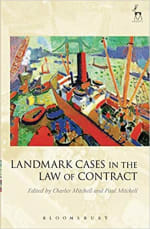

This anthology is part of a series of modern commentaries on highly significant cases in several different areas of civil law in the English common law tradition. In this volume, 12 important cases from the field of contract law are discussed in detail by 12 experts in that field. All the essays were written especially for this volume. The cases chosen for analysis date from the early-eighteenth to the late-twentieth century. Most of the cases were adjudicated in the UK, but some also have an international dimension.
12.The Concept of Law
By: H.L.A. Hart, 1961
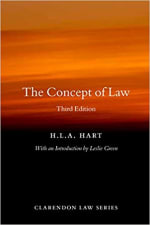

Long considered one of the most important works of legal philosophy of the twentieth century, Hart’s Concept of Law is the locus classicus of the modern school of jurisprudence known as “legal positivism.” Legal Positivism basically says that the law has no metaphysical foundation at all, whether in divine law or in human nature, and that its only authority derives purely and simply from its factual status as law—that is, a set of conventional rules according to which a social group de facto lives. A Third Edition of this classical, if controversial, book was published in 2012—some 50 years after the original edition.
13.Landmark Cases in Family Law
By: Stephen Gilmore, Jonathan Herring, and Rebecca Probert, editors, 2011


This is another volume in the series of anthologies of commentaries on historically significant cases in the civil law in the English common law tradition (see #11 above). This volume contains 13 essays by 15 prominent authors in the field of family law, together with a substantial introductory essay coauthored by the volume’s three editors. The cases were chosen for the historical role they played in shaping the growth of family law in England and Wales.
14.Landmark Cases in the Law of Restitution
By: Charles Mitchell and Paul Mitchell, editors, 2006
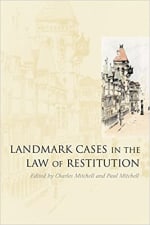

Another anthology of essays in a well-regarded series of commentaries on significant civil cases in the English common law tradition, this volume deals with 12 cases by 14 authors in the law governing financial restitution for “unjust enrichment,” as well as for “wrongdoing.” Ranging as far back in time as 1615, the cases were all adjudicated in the UK. This is a companion volume to Landmark Cases in the Law of Contract (see #11 above).
15.Landmark Cases in the Law of Tort
By: Charles Mitchell and Paul Mitchell, editors, 2010
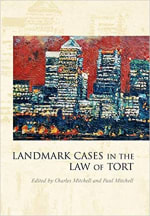

This book is another installment in a well-regarded series of anthologies of legal commentaries on historically significant civil cases in the English common law tradition—in this case, the law of tort. The 16 authors are all distinguished academic legal scholars, who are mostly based in the UK, though some hold positions in the US. This volume examines 13 cases dating back to the early nineteenth century, covering such diverse areas of the law as public nuisance and torts of negligence.
16.Landmark Cases in Equity
By: Charles Mitchell and Paul Mitchell, editors, 2012
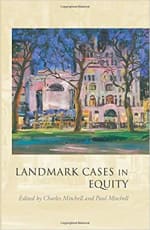

This collection is another in a British series of commentaries on important civil cases in the development of the English common law tradition. This volume covers 22 cases in the field of the law of equity, penned by 23 authors. The individual cases range historically from 1615 to 1999. The law of equity encompasses the principles affecting the equitable jurisdiction of courts, the development of property rights, constraints on the power to create trusts, the duties of trustees and other fiduciaries, and the remedies for breach of these duties.
17.The Law of Peoples
By: John Rawls, 2001
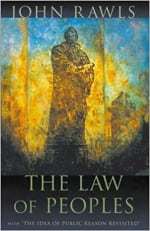

Celebrity liberal legal scholar and philosopher, John Rawls, follows up his ground-breaking works in political theory (see #6 above and #18 and #19 below) with this analysis of human rights and international law. The book makes a fundamental distinction between the universal rights of human beings as such and the civil rights of citizens of a liberal constitutional democracy. It further explores the moral grounds for determining when such a society may appropriately wage war against a society that violates international norms or render assistance to societies burdened by negative political, social, or economic conditions. A Revised Edition of the book was published in 2001.
18.Political Liberalism
By: John Rawls, 1993


In this book, Rawls fundamentally modifies the philosophical interpretation of his landmark 1971 A Theory of Justice (see #6 above). In that previous work, the author bases his argument on the assumption of a society with a fairly homogeneous set of basic moral and philosophical beliefs. However, the citizens of modern pluralistic societies often hold incompatible and irreconcilable basic moral and philosophical beliefs. Rawls argues this is a permanent condition of democracy, then goes on to investigate how a just society of free and equal citizens can live in harmony when divided by incompatible fundamental moral and philosophical doctrines. An Expanded Edition of this book was published in 2005.
19.Justice as Fairness: A Restatement
By: John Rawls, 2001


This book is the author’s attempt to present a streamlined, more-accessible version of his famous argument in his 1971 A Theory of Justice (see #6 above) that a just society is one that anyone would agree to inhabit, not knowing what his position in the society will be. In this new book, which is based on a course in political philosophy he taught at Harvard University during the 1980s, Rawls also responds to critics. Following the author’s death in 2002, this book stands as the definitive statement of his famous theory.
20.Utilitarianism
By: John Stuart Mill, 1863


The moral theory known as “utilitarianism” was originally developed by John Stuart Mill’s father, James Mill, and his colleague, Jeremy Bentham. The younger Mill, however, is the philosopher who really put their theory on the philosophical map—with this book. The theory says the right thing to do in any situation is whatever will produce, in the famous phrase: “the greatest good for the greatest number.” The theory forms the moral foundation, spoken or unspoken, for much of the jurisprudence in the English-speaking world. The book was originally serialized in Frazer’s Magazine in 1861, before being published in book form two years later. There have been a great many reprints over the years.
21.Leviathan, or The Matter, Forme and Power of a Commonwealth Ecclesiasticall and Civil
By: Thomas Hobbes, 1651


Hobbes’s magnum opus is often considered to be the most important work of political philosophy in the English language. Composed during the English Civil War, the book is a meditation on the foundations of the state, law, and political authority. Written in support of the monarchy, Leviathan is also the locus classicus of the so-called “contract theory” of the state, as well as the unforgettable description of man’s life in “the state of nature” as “solitary, poor, nasty, brutish, and short.”
22.The Law
By: Frédéric Bastiat, 1850


Originally published in France as La Loi, this short treatise was first translated into English in 1853, and has been retranslated numerous times and published in various editions in the years since. It is one of the last things that Bastiat (1801–1850) wrote. In it, he maintained that each individual possesses a natural, God-given right to defend himself, his property, and his liberty. The state, which at its heart is a means of common defense, is only legitimate to the extent that it defends these God-given rights of individuals. Bastiat is thus one of the earliest thinkers to articulate what has come to be known as the “libertarian” political philosophy.
23.Code of Justinian (Codex Justinianus)
By: Imperial Commission, 529 AD
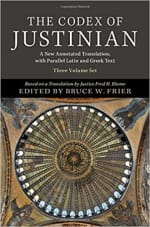

Shortly after assuming the throne, the Emperor Justinian (reigned 527–565) ordered a complete revision of Roman law. He appointed an imperial commission, which after two years produced this book (the literal meaning of the Latin word “codex”), along with several other summaries of Roman law. Originally written in Latin (the imperial language), it was translated into Greek (the language of the Eastern Empire) as the Basilikē (“Royal”) in the ninth century AD. Surprisingly, it was not translated into English until 1932. The book is not of historical interest only, because the national legal codes developed during the period of the foundation of early-modern European nation states were all based on Roman law. A three-volume, multilingual set was published in 2016.
24.Legal Education and the Reproduction of Hierarchy: A Polemic Against the System
By: Duncan Kennedy, 2004
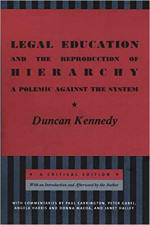

This book is based on a pamphlet the author self-published in 1983, which argued that mainstream legal education reinforces class, race, and gender inequality, and therefore must be radically reformed. In its place, Kennedy proposes a radical egalitarian educational vision based on workplace self-organization. The book also provides comprehensive coverage of law school, from the first day to moot court to job placement after graduation. In its underground and its published forms, this book has been one of the most influential works on the American system of legal education. It was reprinted in 2007.
25.The Paper Chase
By: John Jay Osborn, Jr., 1971
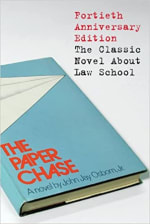

This classic novel is written from the perspective of a student from the Midwest entering Harvard Law School, where it follows his experiences—during turbulent times and through many ups and downs—until graduation. By turns gently comic, lushly romantic, and sharply satirical, the book portrays law professors, deans, and other students in all their individual quirkiness and flawed humanity. The novel, made into a successful film of the same name in 1973, is beloved by generations of American legal professionals and beyond. A Fortieth Anniversary Edition was published in 2012.
Now that you know what books to check out, consider a deep dive with a look at The Best Colleges & Universities for a Bachelor’s in Law.
Get more study tips, learning tools, and study starters with a look out our Complete Library of Study Guides.
Or jump to our student resource library for tips on everything from studying to starting on your career path.